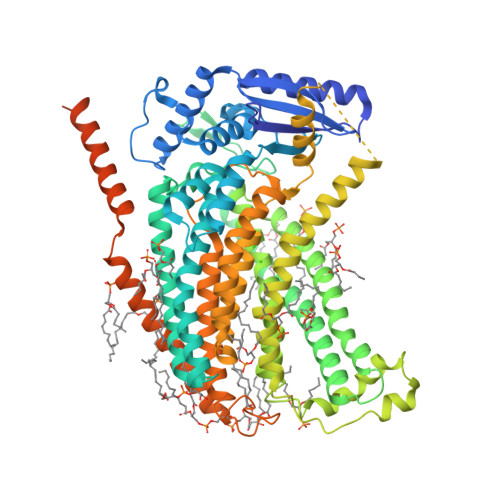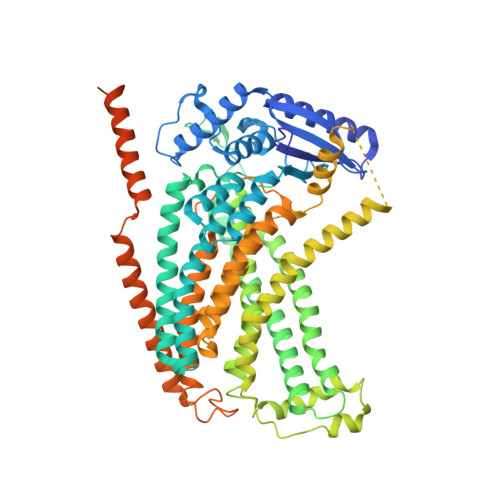TMEM16 scramblases thin the membrane to enable lipid scrambling.
Falzone, M.E., Feng, Z., Alvarenga, O.E., Pan, Y., Lee, B., Cheng, X., Fortea, E., Scheuring, S., Accardi, A.(2022) Nat Commun 13: 2604-2604
- PubMed: 35562175
- DOI: https://doi.org/10.1038/s41467-022-30300-z
- Primary Citation of Related Structures:
7RWJ, 7RX2, 7RX3, 7RXA, 7RXB, 7RXG, 7RXH - PubMed Abstract:
TMEM16 scramblases dissipate the plasma membrane lipid asymmetry to activate multiple eukaryotic cellular pathways. Scrambling was proposed to occur with lipid headgroups moving between leaflets through a membrane-spanning hydrophilic groove. Direct information on lipid-groove interactions is lacking. We report the 2.3 Å resolution cryogenic electron microscopy structure of the nanodisc-reconstituted Ca 2+ -bound afTMEM16 scramblase showing how rearrangement of individual lipids at the open pathway results in pronounced membrane thinning. Only the groove's intracellular vestibule contacts lipids, and mutagenesis suggests scrambling does not require specific protein-lipid interactions with the extracellular vestibule. We find scrambling can occur outside a closed groove in thinner membranes and is inhibited in thicker membranes, despite an open pathway. Our results show afTMEM16 thins the membrane to enable scrambling and that an open hydrophilic pathway is not a structural requirement to allow rapid transbilayer movement of lipids. This mechanism could be extended to other scramblases lacking a hydrophilic groove.
Organizational Affiliation:
Department of Anesthesiology, Weill Cornell Medical College, New York, NY, USA.


















